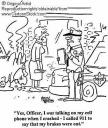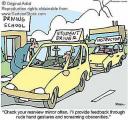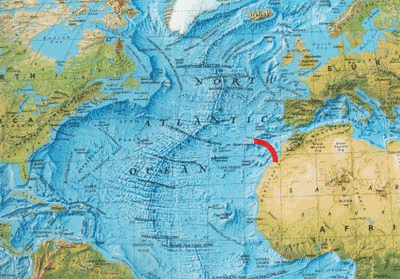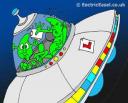
As far as I’m concerned, anyone who thinks that our way of life doesn’t affect the environment (climate included) is an idiot. Sorry, but some people still continue believe that we can spew as much CO2 into the air as we want and it will have no long-term effect on the Earth’s climate. You only need to look at exactly how much CO2 is produced by man:
Since 1751 roughly 315 billion tons of carbon have been released to the atmosphere from the consumption of fossil fuels and cement production. Half of these emissions have occurred since the mid 1970s. The 2004 global fossil-fuel CO2 emission estimate, 7910 million metric tons of carbon, represents an all-time high and a 5.4% increase from 2003.
People talk of gas emmissions in terms of mass, which understates the quantity…  But exactly how much space does 1 tonne of CO2 gas occupy? You only need to look at molar volumes of gases:
But exactly how much space does 1 tonne of CO2 gas occupy? You only need to look at molar volumes of gases:
1 tonne = 1 million grams.
44g of CO2 = 1 mole = 24.5L of gas (at 25ºC and standard atmospheric pressure)
Therefore, just 1 tonne of CO2Â gas occupies 557 thousand litres. (= 22.7 kmoles or 557 m3)
Taking the figure above, annual global CO2 emmission at 7910 million metric tons (7,910,000,000), multiply that by the volume occupied by one tonne (557,000), and we come up with 4.4 THOUSAND TRILLION LITRES OF CO2 GAS PRODUCED EVERY YEAR.
We spew 4,400,000,000,000,000 litres of CO2 into the Earth’s atmosphere every single year.
We do not live in an infinite space, not in area, nor in volume. Yes, gravity sucks back all those CO2 molecules to planet earth. So I take the thickness of the atmosphere, from wikipedia:
Three quarters of the atmosphere’s mass is within 11 km of the planetary surface. 99.99997% of the atmosphere by mass is below 100Â km.
And the Earth’s total surface area from another source:
The total area of the Earth is approximately 510 million square kilometers.
My ultra quick calculation of volume of Earth’s atmosphere, up to 100km (yes let’s include all of it) = 51 trillion trillion cubic metres or 51,000 trillion trillion litres. That includes the atmosphere, the stratosphere, the troposphere, the mesosphere -yes, the entire fucking quota.
It appears some people claim that we can produce that much CO2 gas, 4.4 THOSAND TRILLION LITRES EVERY SINGLE YEAR, and it no way affects the limited volume of ‘our own’ atmosphere (51,000 trillion trillion litres)!!! That’s equivalent to an increase of 86 parts per billion CO2 gas every single year.
A few points:
- Of course, much of these emmissions are recycled into oxygen by trees and plants during photosynthesis. But while we continue to cut those down that won’t help us with our CO2 problem!!
- The upper atmosphere, the stratosphere, is extremely low pressure & doesn’t actually «hold» much gas.
- Â CO2 is 1.5 times denser than air.
- Using other estimates of the mass of the Earth’s atmosphere (5 quadrillion metric tonnes) used in the above calculation results in an increase in CO2 concentration of 1.6ppm per year!
- The world’s oceans can also dissolve some CO2, acting like a large reservoir. But here again, there is a limit to how much seawater can take.
Do I even need to elucidate my calculations further????? People claim that our CO2 production has no affect on our precious environment, not even cumulatively! And as an ex-research scientist, that mode of thinking enrages me. 
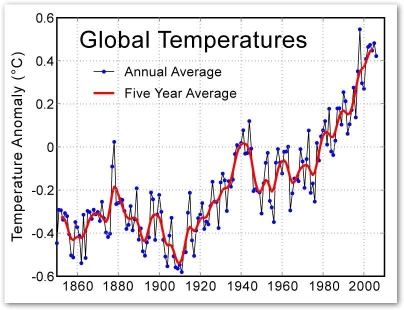



Tags: Science Simplified, Vida Enigmática // 22 Comments »


 ng
ng kr
kr -n
-n
 , s
, s
